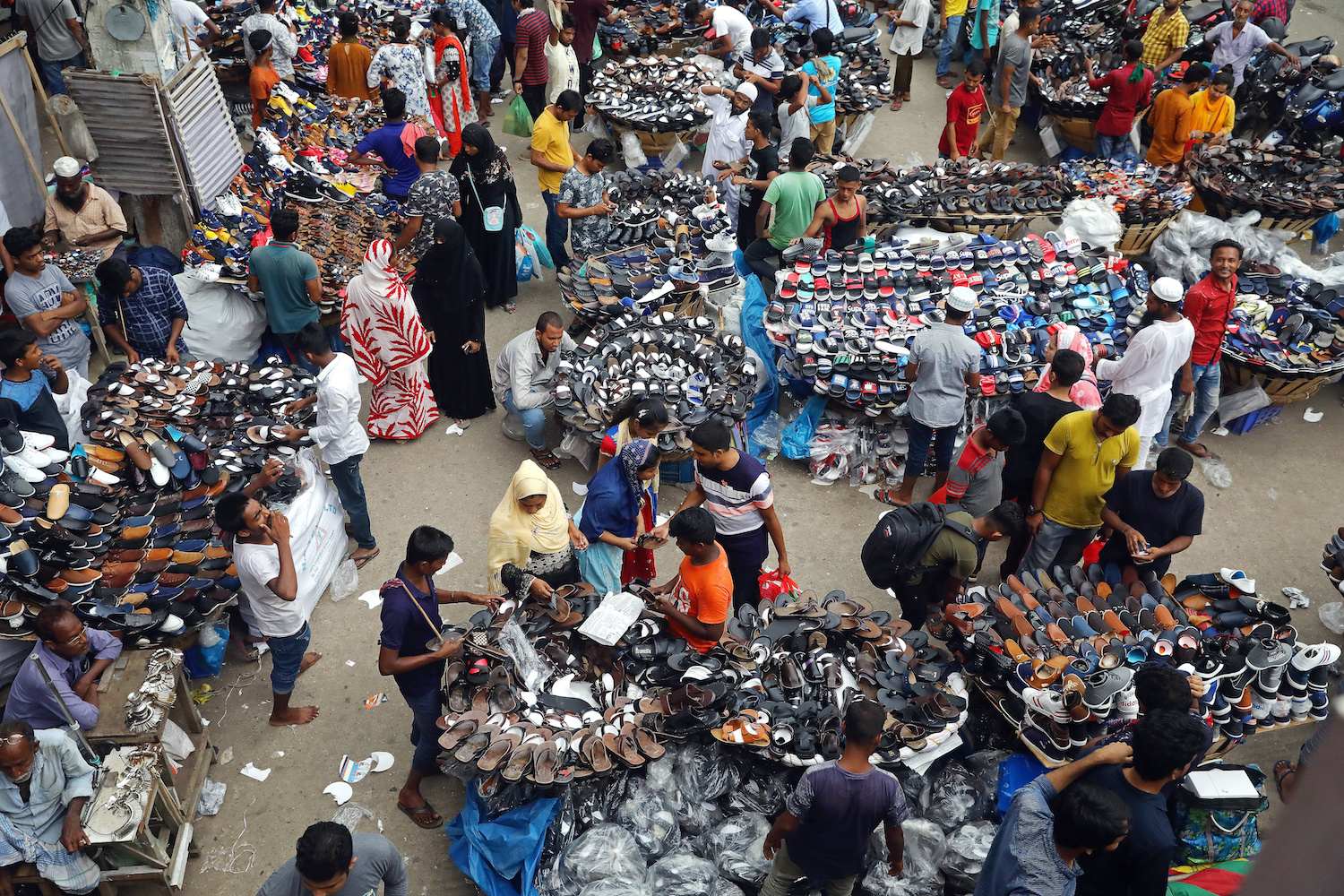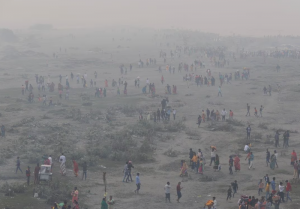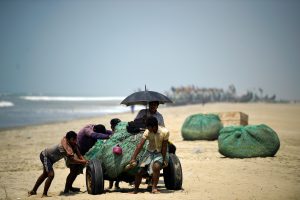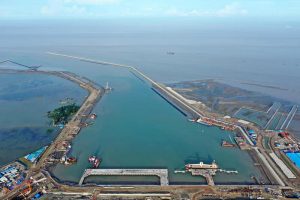The region’s once-destitute state now has an economy that is outshining both India and Pakistan with higher GDP growth and better per capita ratings for health and life expectancy; clever management of ties with Delhi and Beijing has also paid significant dividends
(AF) Bangladesh was for many years dismissed as a ‘basket case’. Born destitute in 1971 after a brutal nine-month liberation war with Pakistan, the country may only now, half a century later, be finding its feet.
The aftermath of the war made Bangladesh look like a country that had emerged from “a nuclear attack”, according to World Bank inspectors. It was so poor that 80% of its people lived in deprivation, poverty and famine – circumstances that convinced millions to flee for years following its traumatic birth.
But five decades on, the People’s Republic of Bangladesh, which celebrated 50 years of independence on March 26, appears to be finally emerging from the shadow of India, its giant South Asian neighbour. But already, it seems to be way ahead of Pakistan in terms of economic success and social transformation.
It has also emerged as one of the fastest growing economies in the world – a “role model for South Asia,” according to the business magazine The Economist.
Bangladesh’s economy grew by an average of 6.87% a year over the past decade, hitting a high of 8.2% GDP growth in fiscal year 2019, a rate faster than India’s 4.3% or Pakistan’s 2.08%.
In fiscal 2021, even with the pandemic knocking the country’s growth down to 5.2%, Bangladesh is still well ahead of its bigger neighbours – India reported negative growth of -7.3% and Pakistan 3.94%.
Looking ahead, Bangladesh’s GDP is projected to grow at 7.5% in 2022, which could also be above its neighbours; the World Bank has projected GDP growth of 5.8% for India and 2% for Pakistan.
In terms of GDP per head, the region’s once poorest big country is now ahead of both.
Bangladesh Planning Minister MA Mannan revealed in early June that the country’s per capita income has risen from $2,064 to $2,227, which is $280 higher than India’s per capita income of $1,947, and Pakistan’s $1,543.
Better still, with 170 million citizens, the world’s eighth most populous country also boasts a lower infant mortality rate, higher school enrolments and longer life expectancy than both its neighbours.
Geopolitical importance
Bangladesh’s turnaround rests on four pillars: its scorching readymade garments industry, a large and young workforce, determined efforts to adopt digital power to become a knowledge-based economy to diversify beyond farming and manufacturing for growth, and generous policies to incentivise entrepreneurship.
Garment exports have been growing 16% annually since 2019 and hit over $40 billion this month, making Bangladesh the second largest exporter of ready-made garments after China.
Half of its people are under 25, which has meant its young workers have easily adopted technology and are helping more Bangladeshis to join the formal economy.
All that has led to the promise of a brighter future. Bangladesh is expected to become the 24th largest economy in the next 15 years, according to UK-based research firm, Centre for Economics and Business Research (CEBR) in its World Economic League Table 2019.
In 2018 the country ranked 43rd in the globe for its higher economic growth, but analysts at CEBR say it could climb 19 places to a $1-trillion-plus economy from $286 billion three years ago, and emerge as the 24th largest economy by 2033.
That is also making Bangladesh a more attractive neighbour in the region.
“Bangladesh’s growth trajectory has led to significant international attention being riveted on this state, as two of its largest Asian powers (and neighbours), India and China have started wooing the country aggressively,” Sreeradha Dutta, a Bangladesh expert and centre head at the Delhi-based Vivekananda International Foundation partners, told Asia Financial.
Experts say that due to its geographic proximity to Nepal and Bhutan in the north, China in the northeast, and Burma in the southeast, as well as sharing its longest border with India, Bangladesh has become geopolitically significant to all its neighbours.
But economic reasons apart, political and strategic considerations have led India and China, in particular, to vie with each other to form a close partnership with Bangladesh.
“There is clearly an increased rivalry between China and India in Bangladesh. This is evident from the increased investments in Bangladesh from both countries,” Arild Engelsen Ruud, a professor of South Asia studies at the University of Oslo told Asia Financial.
“Bangladesh is important for India because of its access to the North East and Bangladesh has used that quite successfully for over two decades, while Bangladesh needs China for investments, infrastructure, arms, and trade,” he adds.
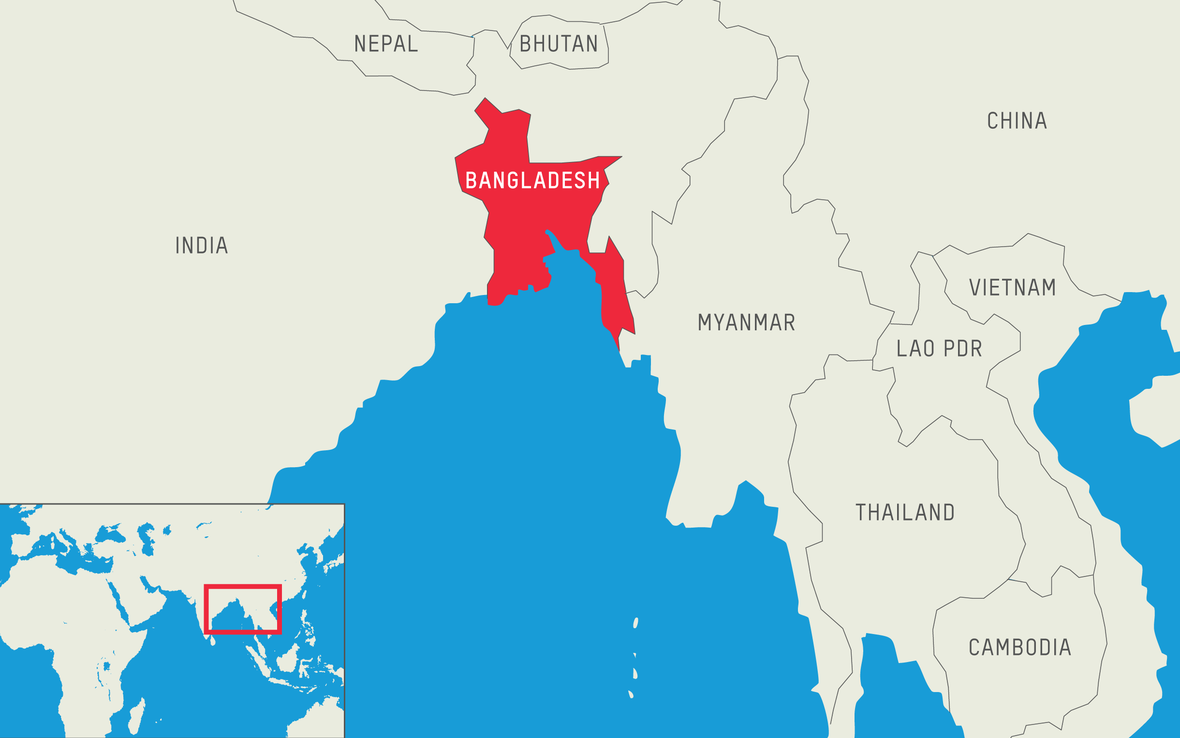
Delicate balance
Consequently, despite being in the middle of rising Indian and Chinese competition for South Asian influence, Bangladesh has to play a delicate balancing act between the two countries and tactfully handle these regional powers for its own benefits, experts say.
While Bangladesh enjoys and maintains robust strategic ties with India, it is also seeking billions of dollars’ worth of assistance for infrastructure, arms and its economy from China.
Indeed, China has emerged as Bangladesh’s largest trading partner, with the bilateral trade volume hitting $12.09 billion in fiscal 2020.
To rectify the gaping trade gap between the two – Bangladeshi exports to China only amounted to $600 million last year while imports from China were a mammoth $11.49 billion – they have also signed a free-trade agreement that provides access to 98% of Bangladesh’s products to China.
Development cooperation has been integral to the Bangla-China relationship as well.
According to local reports, up until now, China has promised investment totalling about $40 billion – its highest in the region. This includes $24.45 billion in bilateral assistance for infrastructure projects like bridges, ports, power, roads, and $13.6 billion in joint ventures.
In addition, China has also committed $20 billion in loan agreements.
China is also investing in green energy projects, including a proposal for a 310-megawatt solar-power plant, and a $400-million joint venture to build 500 megawatts of renewable energy projects by 2023.
“But cooperation has also been one of the hallmarks of India-Bangladesh relations,” Ahsan Mansur, executive director of The Policy Research Institute of Bangladesh, pointed out.
“Bangladesh wants to maintain good relations with India in its own interest. And, when it comes to issues like security arrangements with respect to terrorism, borders, human resources development and healthcare, Bangladesh has always been more aligned to India,” he told Asia Financial.
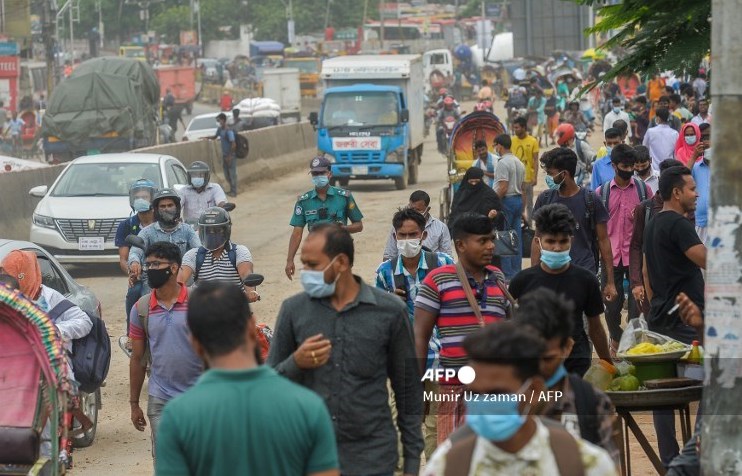
Respectful of India
“This government is particularly respectful of India and considers its 50-year relationship as a lasting relationship, despite some disappointments like river-water sharing disagreements, treatment the Rohingya refugees, and intermittent trade-related disputes,” Mansur says.
India’s Ministry of External Affairs considers Bangladesh as its “biggest development partner” and has extended financial aid worth $8 billion over the past eight years for development of infrastructure in “sectors including roads, railways, shipping and ports.”
India has been a key player in the country’s human resource development as well through numerous training programmes and scholarships, the ministry says, adding that India has been the most significant provider of aid to help Bangladesh manage the Covid pandemic.
As part of India’s vaccine diplomacy, it has provided three lots of medical assistance – giving it more than 2 million doses of Covishield (Oxford-AstraZeneca) vaccines, and supplying 30,000 surgical masks, 15,000 head covers, 50,000 surgical latex gloves, 100,000 Hydroxychloroquine medicine tablets and Covid test kits.
India is also assisting Dhaka’s state-owned Beximco Pharmaceuticals to make 30 million doses of Covishield vaccine, the ministry said.
Lailufar Yasmin, a professor in the Department of International Relations at the University of Dhaka, said that while South Asia’s place in global affairs has often been underrated, Bangladesh’s rise as an economic power has put a spotlight on the region.
“Competing interests of China and India, as well as the focus of other global powers like Japan, USA, and Russia on Bangladesh have suddenly catapulted the whole region into geological prominence,” Yasmin told Asia Financial.
Read More:
Brahmaputra blues: China’s dam plan may make India build one too
Banking crisis killing business, tormenting citizens in Myanmar
Chinese garment factories burnt down in Yangon




